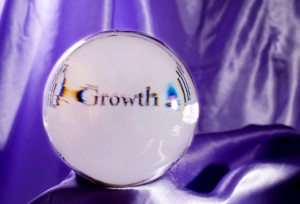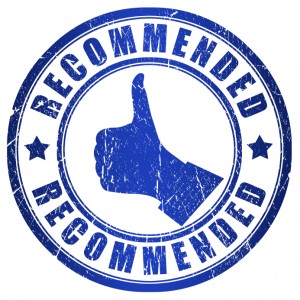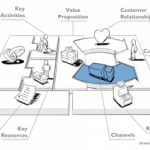Grow Fast or Die Slow – Alignment and Strategy in the Software Industry

Grow Fast or Die, say McKinsey
Last week I shared a piece of research with my network by McKinsey on the need for software businesses to grow fast or expect to die slow.
There are three areas where I would like to add some further details to their findings – these all concern the aspect of how to achieve growth for B2B software companies.
As McKinsey rightfully states the ideal market is one that is almost limitless (e.g. every mobile user). In most cases the market for a B2B product has defined limits (e.g. organizations with over 100 employees, organizations in the energy sector). This means that in order to determine the answer to three of the five questions that McKinsey state are vital to successful growth, the CEO must know precisely what the company’s addressable market is. Is it purely national or is it global? If it is global are there any local barriers to entry – especially in key target territories? How easy is it to overcome them? Who are the competitors that I have not seen in my home territory and how rapidly are they growing?
Most of the time these questions should be answered internally. Like all critical numbers in your business these should, from time to time, be externally audited particularly when the question of how secure are we in our core markets is reviewed.
‘No man is an island, entire of itself’ wrote John Donne. Neither is any piece of B2B software. All B2B software exists within an eco-system of other solutions and knowing your eco-system intimately is key to working out what opportunities there are when growth in ‘Act one’ (as McKinsey call it) starts to slow. Can the addressable market be increased by closer partnering or acquisition? Can your solution become a platform, or is there a platform provider that might acquire you? Is a member of your eco-system in danger of being a competitor? Should you launch a new product that competes head-on with a weaker member ? Is your eco-system well placed to take on competitors in a new market?
 In terms of understanding your eco-system there are two equal and opposite errors that must be avoided. The first is paying insufficient attention to it and consequently being wrong footed by developments of a key partner. The second is to be distracted by it. Each eco-system member is running their business – you have to run yours. ‘Only the Paranoid Survive’ wrote Andy Grove – you need enough management time devoted to your eco-system to maximize its value to your business: spend too much and you will lose focus.
In terms of understanding your eco-system there are two equal and opposite errors that must be avoided. The first is paying insufficient attention to it and consequently being wrong footed by developments of a key partner. The second is to be distracted by it. Each eco-system member is running their business – you have to run yours. ‘Only the Paranoid Survive’ wrote Andy Grove – you need enough management time devoted to your eco-system to maximize its value to your business: spend too much and you will lose focus.
McKinsey note that one of the most difficult areas to master is transitioning from ‘Act One’ to ‘Act Two’. Apart from getting the timing right, the skills required to successfully manage the business is different in each act. Consider the factors that may be new to the business in Act Two: internationalization; change of business model from direct to indirect; change from single product to multi-product company or change from point solution to platform.
It is rare that the management team that have taken the business through Act One have all the skills necessary for Act Two. Even if they do, it is highly unlikely that they will have the spare capacity to devote to the new challenges. This means that the business will need to hire the skills required either permanently or on a temporary basis while knowledge is transferred to internal candidates. The CEO’s challenge at the transition point between acts is aligning the timing of the transition with the acquisition of the skills needed to make that transition.
In summary, my advice to a CEO wanting to grow fast is know your market opportunity in great detail, worry about your eco-system and surround yourself with the best people for the task in hand.








